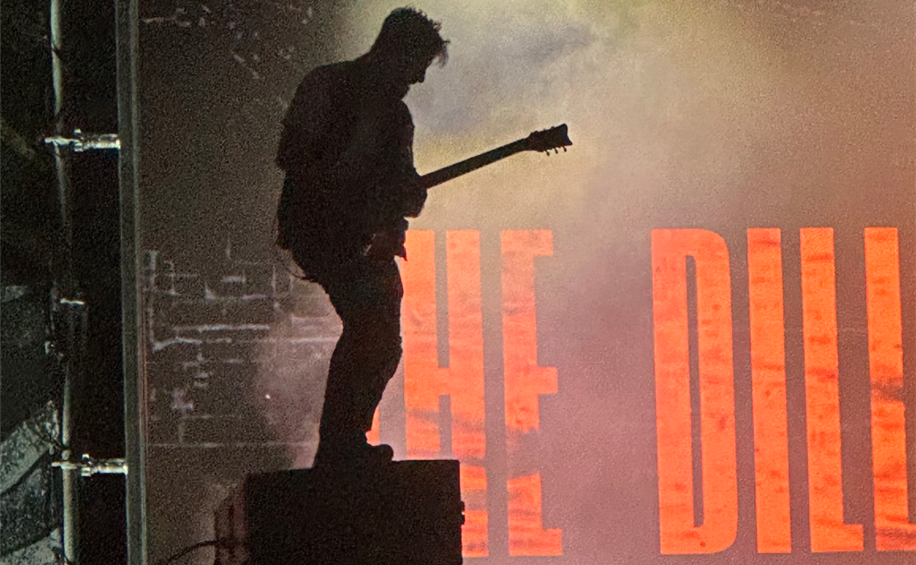Nestled beneath lush pine forests of the Carpathian Mountains in the quaint Transylvanian town of Rasnov, Rockstadt Extreme Fest unleashed its tenth annual independent music festival, their website boasting, “The largest and most monumental heavy metal festival in Eastern Europe.”
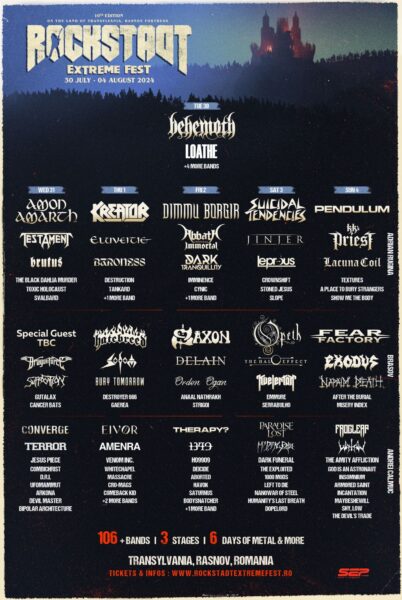
Rockstadt Extreme Fest 2024 Lineup 2024.
Metal and various offshoots — including death, black, thrash, progressive, doom, stoner, alongside heavy strands of hardcore and punk — combined for a marathon six-day festival showcasing 106 bands mostly European and North American in origin. Marquee acts included Suicidal Tendencies, Kreator, Testament, Behemoth, Amon Amarth, Napalm Death, and Converge. The festival ran from July 30th through August 4th.
As large-scale festivals globally have embraced a variety of musical genres under one umbrella, the organizers of Rockstadt bucked this trend by doubling down on relentlessly heavy music. I attended the Wednesday iteration, which contained the strongest roster in my opinion. As an aging scenester, I have the tolerance for a singular day of festival. My back is still healing from a Turnstile and M.I.A show I recently saw in Sweden.
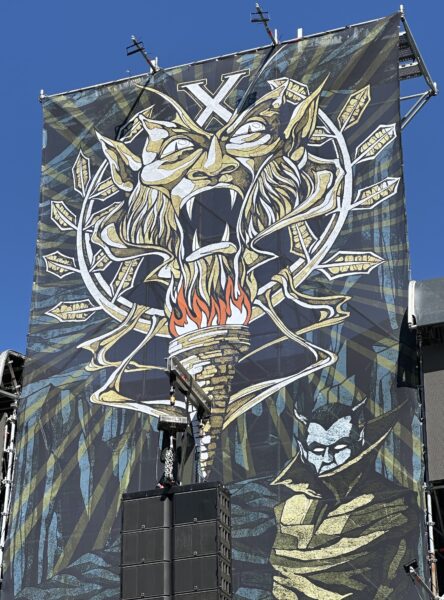
Stage setup for Rockstadt Extreme Fest 2024. Smartphone Photo by David Gracon
Extreme Fest presents unique cultural programming for the region. Many of these artists would likely never venture to Romania, and Transylvania in particular is often bypassed for more lucrative markets and easier-to-navigate touring routes crisscrossing western Europe. With the slow moving and meandering mountain roads, Transylvania requires some effort just to show up, for fans and artists alike.
The rickety train from where I currently live in Brasov, half full of metalheads, dropped us off in Rasnov as a horse-drawn wagon passed the station. A 14th-century citadel fortress overlooks the old city square and nearby festival stages. This otherwise sleepy town overrun with subcultural fashions spanning spiked jackets, fishnets, white face-paint, and died green hair presented a beautiful spectacle.
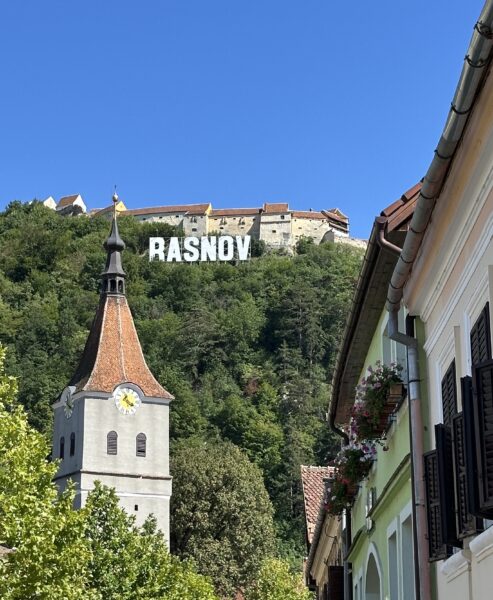
Rasnov, Romania. Smartphone Photo by David Gracon
In a country mostly famed for inspiring Dracula and vampire mythologies based on the brutal lore of Vlad the Impaler, who was born in the region; a bloody 1989 revolution that usurped totalitarianism; and an overpopulation of hungry brown bears lurking in the nearby forests, the setting for Extreme Fest is quite frankly, well, metal.
Czech Republic’s Gutalax, a grind-core act performing in white hazmat suits peppered the audience with poop jokes as fans heaved toilet paper rolls serving as party streamers. Fans crowd surfed in an inflatable raft while others adorned themselves with a toilet seat as, perhaps, a dada-inspired clunky necklace. I ducked out early and stumbled upon the Italian doom metal of Ufomammut. On a sparsely attended stage surrounded by pines, this felt like an intimate experience, rare at a large-scale festival. Their disciplined use of repetition, heavy sludgy riffs and droning vocals was captivating.
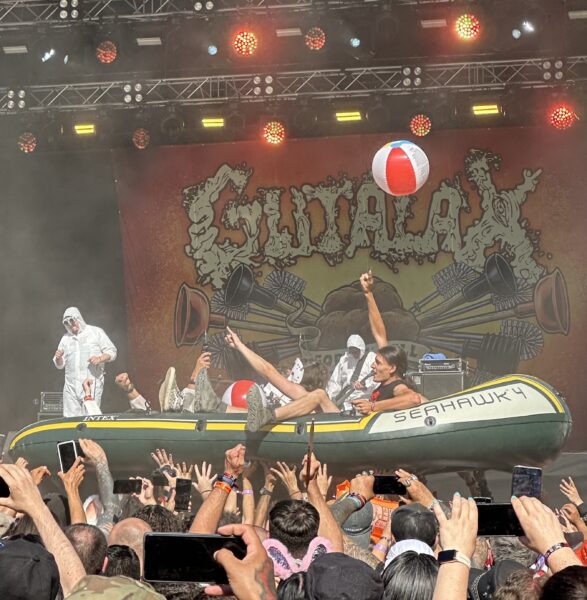
Gutalax with boat surfing fans. Smartphone Photo by David Gracon
Belgian post-hardcore trio Brutus brought a much-welcome reprieve from the hyper masculine vibes of the day. As they entered the stage, one member turned his hands into a loving heart shape, which the crowd enthusiastically mimicked. Brutus worked more effectively with space, atmospherics, and dramatic and melodic builds. Stefanie Mannaerts delivered a cathartic pummeling of her drums while belting out powerful lines like “Every silence you break/you’re so brave” from “Brave.” They performed a number of additional tracks from their excellent album Unison Life (2022) including “Miles Away” and “What Have We Done.” Hands down, Brutus gave one of the day’s standout performances.
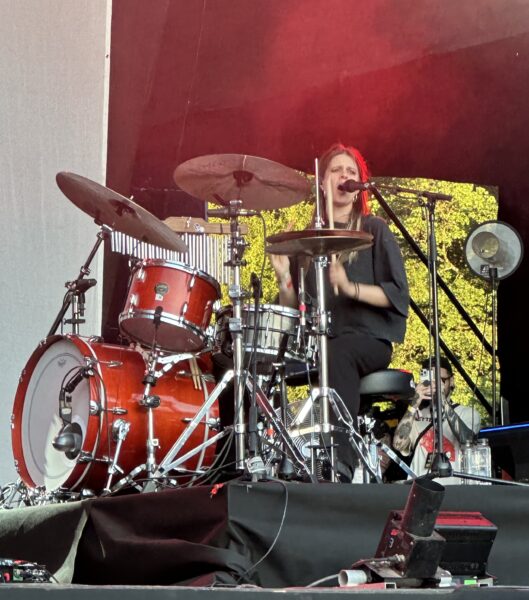
Brutus vocalist and drummer Stefanie Mannaerts. Smartphone Photo by David Gracon
Between acts, I sat on a curb to rest and drink beer. A Ukrainian man from Kyiv came up to me, commenting on my Buffalo Bills hat, which happens often abroad, and we chatted American football to pass the time. His favorite team, the Browns. I skipped asking about the war as I imagined he was here to enjoy himself.
The last time I saw Terror frontman Scott Vogel perform was with Slugfest, a much earlier band of his, at a Hamburg, New York, roller-rink in the early ’90s. I was a high school student and Buffalo, NY, was a mecca of hardcore music. Vogel since relocated to Los Angles to form Terror, a heavy brand of gritty working-man hardcore, an aesthetic honed in the post-industrial east. At Extreme Fest, Vogel masterfully riled up the crowd. He encouraged a throng of crowd-surfers to flow over the barricade, while pausing between songs to promote racial justice and thank the crowd “for inviting me into your house.” Their danceable hardcore drum breakdowns, an incredible mix of anger, release, and fun, alongside chugging guitars reminded me of the flourishing ’90s Buffalo DIY scene that propelled me to festivals like this.
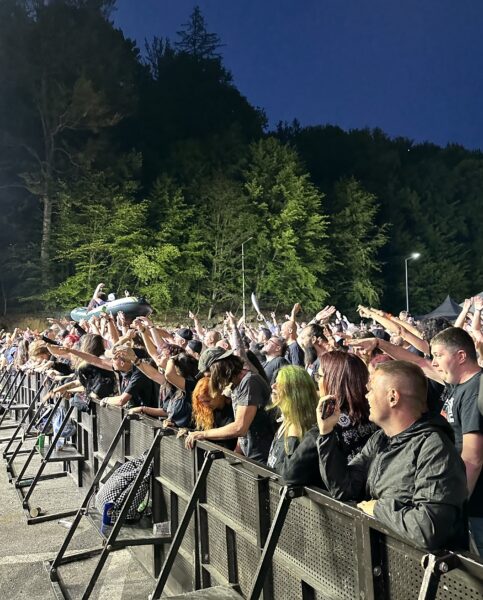
Terror riling up the crowd. Smartphone Photo by David Gracon
Pausing for bite to eat while the Bay Area thrash legends Testament blared away in the distance, I was astonished by the affordability and array of food compared to most festivals. Fresh salads, pasta, quality coffee, all very reasonably priced. A draft beer running for $2 is unheard of at festivals in North America. Of course, this is a matter of perspective and economic privilege. Many Romanian friends and acquaintances told me the festival was too expensive for them to attend. I commend the organizers for making the first day of the festival free for Rasnov residents.
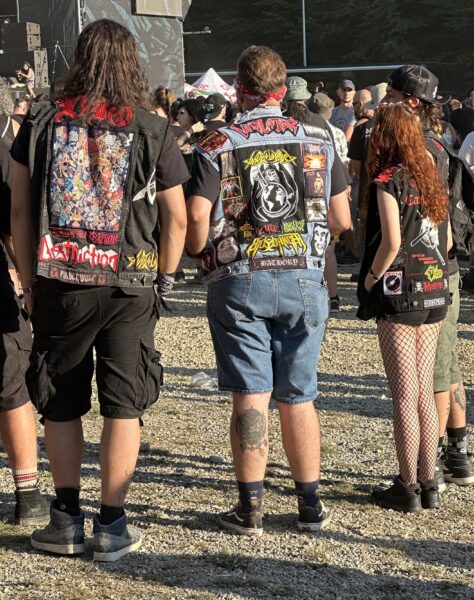
Metal fans at Rockstadt Extreme Fest. Smartphone Photo by David Gracon
New Jersey’s The Dillinger Escape Plan dominated with their technical brand of avant-garde post-hardcore merging disparate elements of free-jazz, intelligent dance music (IDM) and mathrock into a searing musical chaos barely staying on the rails. Their set culminated with “43% Burnt” from their 1999 landmark album “Calculating Infinity.” The guitarist flailed maniacally and hurtled himself off a dangerously tall stack of amps. As the crowd chanted “Dillinger,” a band member ironically responded, “come to daddy,” which struck me as a mocking resistance to worshipping fame.
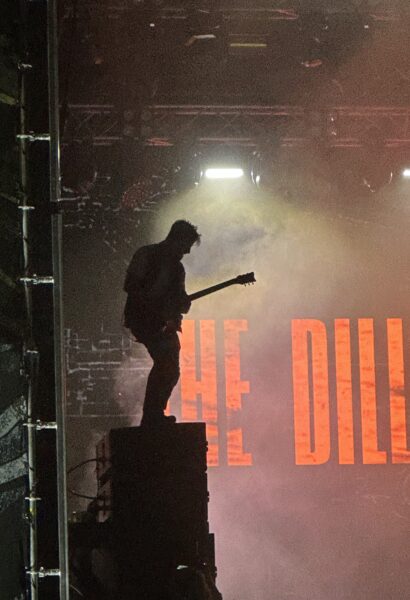
The Dillinger Escape Plan. Smartphone Photo by David Gracon
Sweden’s Amon Amarth put on the most theatrical show of the day, and perhaps of my lifetime. Massive flames erupted from the Hollywood-level stage setup, behind which lurked a horned creature as vocalist Johan Hegg explored Viking mythology and history to an enthusiastic sea of fans.
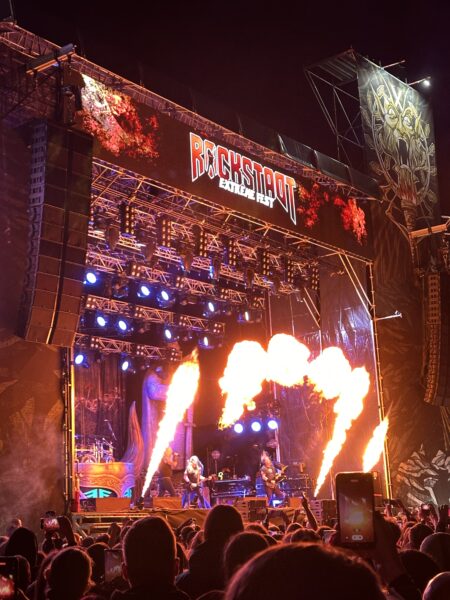
Amon Amarth wrapped in flames. Smartphone Photo by David Gracon
New Jersey metalcore and esteemed scene veterans Converge, the band I was the most eager to see, took the stage at 1:30 a.m. My energy was already spent, given that European festivals run much later into the night compared to the States, but I had to rally. Converge’s stark no-frills presentation, an absolute contrast to Amon Amarth, barreled through “Eye of the Quarrel” and “Under Duress” from their 2017 wrecking ball of an album “The Dusk In Us.” Converge culminated a lengthy day of abrasive sounds that pummeled me, with fist in air, physically and emotionally in a cathartic storm only found through heavy music.
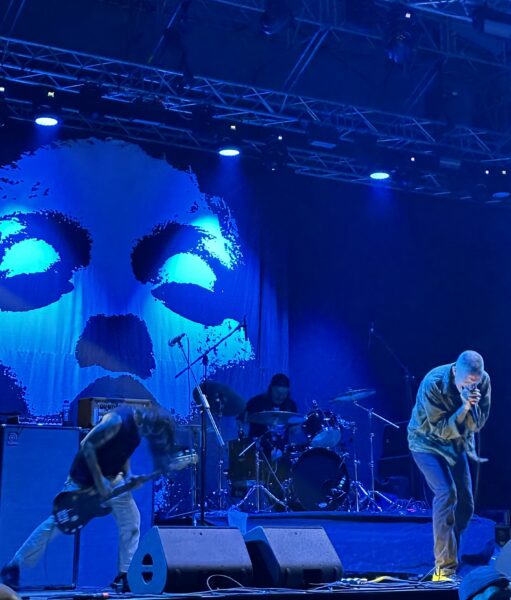
Converge. Smartphone Photo by David Gracon
As the lights went out for the evening, I wandered by the piles of festival garbage and through Rasnov, on the lookout for bears escaping the noise.
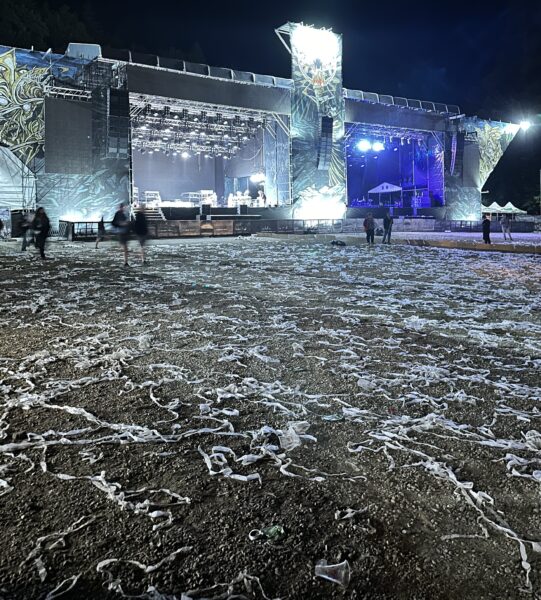
Empty Festival. Smartphone Photo by David Gracon
David Gracon is a U.S. Fulbright Specialist in Mongolia (fall 2024) and previously was a U.S Fulbright Scholar in Romania (2023-2024) and Ukraine (2017-2018) with teaching projects in critical media literacy education. He has taught media studies at Gonzaga and Eastern Illinois University. He is the founder of the Media Literacy Access Initiative (MLAI) and has been a part of DIY media scenes, zines, underground music, alternative film and video communities since 1997.

